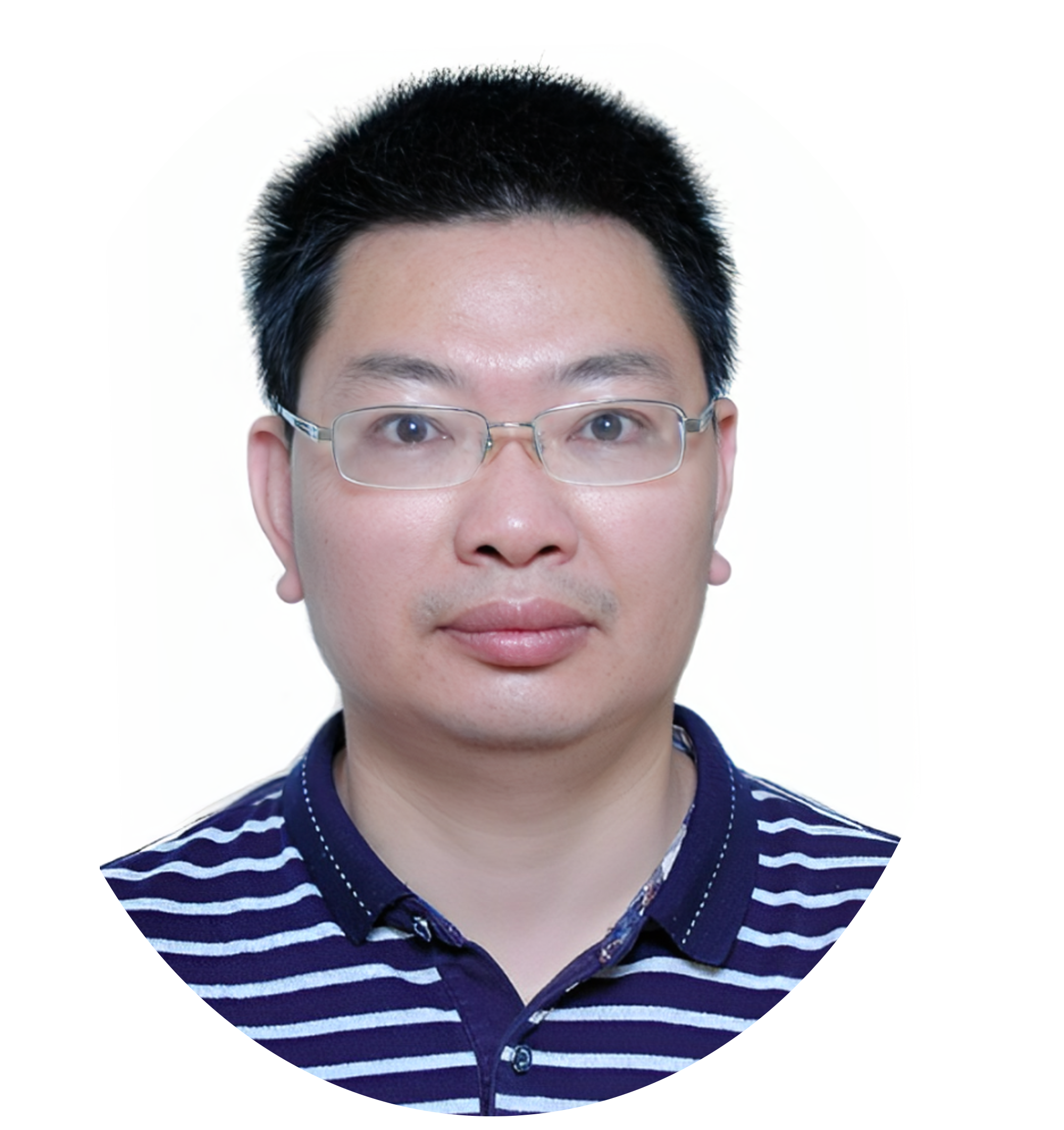
Prof. Jagath Chandana Rajapakse IEEE Fellow Nanyang Technological University, Singapore Email: asjagath@ntu.edu.sg | |
Biography: Jagath Rajapakse is Professor of Computer Science and Engineering at the Nanyang Technological University (NTU), Singapore. He has BSc degree in Electronics and Telecommunication Engineering from University of Moratuwa (UM), Sri Lanka, and MS and PhD degrees in Electrical and Computer Engineering from University at Buffalo (UB), USA. He was Visiting Professor to the Department of Biological Engineering at Massachusetts Institute of Technology (MIT). His research works are in the areas of data science, machine learning, brain imaging, and computational and systems biology. He has published over 300 peer-reviewed research articles in high-impact journals and conferences. His research articles have been cited over 14,000 times on Google Scholar. He was recently ranked among the top 2% scientists globally by Stanford Study. He serves as Editor for Engineering Applications in Artificial Intelligence journal (IF = 7.802) and served as Associate Editor for IEEE Transactions on medical imaging, IEEE Transaction on neural networks and learning systems, and IEEE Transactions on computational biology and bioinformatics. He was a Fulbright Scholar and appointed IEEE Fellow in 2012 in recognition of his contributions to brain image analysis. | |
Title: Thermal Hotspot Detection for Preventive Maintenance and Safey | |
| Abstract: In the realm of preventive maintenance and safety, the detection of thermal hotspots is pivotal. Theseanomalous areas, characterized by elevated temperatures compared to their surroundings, often preludeequipment failure, energy loss, or even hazardous conditions that could lead to catastrophic eventsThermal imaging, which translates heat into visible data, has become an indispensable tool in identifyingthese hotspots early. However, the traditional reliance on manual analysis and labeled data for hotspotdetection presents significant limitations in terms of scalability, speed, and adaptability. Addressing thesechallenges reguires innovative approaches that leverage the latest advancements in machine learning toautomate and enhance the accuracy of hotspot detection..... | |
Assoc. Prof. Ming Xie Nanyang Technological University, Singapore Email: mmxie@ntu.edu.sg | |
Biography: Xie Ming is holding the positions of Associate Professor at Nanyang Technological University, Editor-in-Chief of International Journal of Humanoid Robotics (Indexed by SCI/SCIE), Associate Editor of IEEE Transaction on Autonomous Mental Development, and Director of private companies. He has served as technical consultants to Asia Electronics Pte Ltd in 1994, Port of Singapore Authority in 1994, Delphi Automotive Systems Pte Ltd in 2001, ST Aerospace Ltd in 2006, Murata Electronics Pte Ltd in 2007, and Sony Electronics Pte Ltd in 2007. He has also worked with Renault Automation (Paris/France) in 1986, INRIA Sophia-Antipolis (Nice/France) between 1990 and 1993, and Singapore-MIT Alliance between 2000 and 2004. In addition, Xie Ming has served as the General Chair of International Conference on Climbing and Walking Robots in 2007, and International Conference on Intelligent Robotics and Applications in 2009. Xie Ming obtained his B.Eng in control and automation in 1984. At the same year, he was selected as one of Chinese government's overseas scholars. Thereafter, he obtained the Master degree in industrial automation from the University of Valenciennes (France) in 1986, and the Ph.D degree in informatics from the University of Rennes (France) in 1989. He has published one best-selling book in robotics in 2003, and over 100 research papers so far. Xie Ming has taught a number of university courses such as Applied Machine Vision, Robotics, Computer Graphics, Statistical Process Control, and Physics. Xie Ming's research strengths are in machine intelligence, humanoid robotics and autonomous vehicles. In total, he has won two scientific competition awards, and two best conference paper awards. | |
Title: Key Steps Toward Development of Humanoid Robots | |
| Abstract: Humanoid robots are biped walking robots which are similar to human beings. As a result, the public has a lot of interests in seeing the advances in the development of humanoid robotics. So far, the most impressive versions of humanoid robots are Honda’s ASIMO, Sony’s QRIO, KAIST’s HUBO, and Boston Dynamics’s Atlas. The new additions to the list include Tesla’s humanoid robots and many others. Therefore, it would be interesting for us to share our experiences gained from the development of Singapore’s humanoid robots since 2008. In this talk, I will adopt a pedagogic way of outlining the key steps toward the development of advanced humanoid robots. Particularly, I will explain the details from the viewpoints of energy flow, signal flow, motion flow, and knowledge flow inside humanoid robots. | |
Assoc. Prof. Ata Jahangir Moshayedi IEEE Member, ACM Member Jiangxi University of science and Technology, China | |
Biography: Assoc. Prof. Ata Jahangir Moshayedi is a Senior Member of IEEE and a member of ACM, and a Life Member of the Instrument Society of India and the Speed Society of India. Assoc. Prof. Ata Jahangir Moshayedi actively participates in various IEEE conferences as a keynote speaker chair, reviewer and member of editorial team for conferences and international journals. He has published more than 100 articles and received more than 1100 citations in reputed national and international journals. He has authored three books, holds two patents and 12 copyrights showcasing his pioneering contributions. His latest book, Unity in Embedded Systems Design and Robotics: a Step-by-Step Guide, published by CRC Press, is hailed as the first book to integrate VR, robotics, and embedded systems. | |
Title: Service Robotic As an Assistance for Alzimer Disease | |
| Abstract: Service robots are increasingly being integrated into various fields to assist humans in their daily lives. One of the most promising applications is in the care of individuals with Alzheimer’s disease (AD). This keynote explores the role of service robotics in providing assistance to those suffering from AD, examining their potential to enhance the quality of life, ease the burden on caregivers, and improve overall care delivery.The integration of service robotics into Alzheimer’s care presents a promising frontier for enhancing patient well-being and supporting caregivers. While challenges remain in terms of technology adaptation, cost, and ethical considerations, the potential benefits are substantial. Future advancements in robotics, AI, and machine learning will likely lead to more sophisticated, user-friendly, and effective solutions tailored to the unique needs of Alzheimer’s patients. Embracing these innovations can significantly contribute to improved care, greater independence for patients, and a better quality of life for both patients and their caregivers. This keynote discusses the transformative role of service robotics in Alzheimer’s care, addressing challenges such as memory loss and caregiver burnout. It explores various types of robots—from companions to assistive and therapy robots—and showcases case studies highlighting their effectiveness. Ultimately, it emphasizes the potential of these technologies to improve patient well-being, enhance safety, and support daily activities, while considering future advancements in robotics and AI for even greater impact. |
Prof. Xiaofang Yuan Hunan University, China |
Biography: Prof. Yuan is mainly engaged in teaching and scientific research in intelligent control theory and application, electric vehicle control. He has presided over more than 10 projects, including the National Natural Science Foundation of China (NSFC) top-level project, NSFC youth project, and China Postdoctoral Special Funding Program. He has published more than 50 papers in IEEE Transactions and other international authoritative journals in the field of control, including 40 SCI-indexed papers and 1 ESI-highly cited paper. |
Title: Research on Green Collaborative Optimization for Discrete Manufacturing |
| Abstract: Discrete manufacturing is an important pillar of the national economy and the main battlefield for implementing the national strategy of building a strong manufacturing country. Against the backdrop of energy conservation, emission reduction, quality improvement, and efficiency enhancement, greening has become one of the important development directions in the field of discrete manufacturing. This report focuses on the processing equipment level, production workshop level, and factory level of discrete manufacturing processes, and extracts multiple important collaborative optimization problems. Taking the manufacturing process of a typical workshop as the research object, this study deeply analyzes the requirements and characteristics of actual production scenarios, defines energy consumption or carbon emissions as green indicators, selects appropriate decision variables, and describes the coupling constraints between variables, thus constructing a green collaborative optimization model. In order to efficiently solve the model, a series of multi-objective optimization algorithms with excellent performance were developed by integrating multiple problem knowledge driven heuristic algorithms into the swarm intelligence metaheuristic algorithm framework. |



